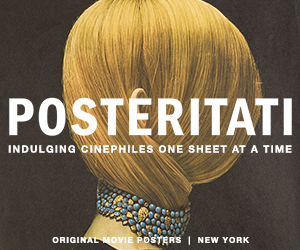A young Toshiro Mifune, in his second film with director Akira Kurosawa after 1948’s Drunken Angel, anchors Stray Dog, delivering an energy that pulses with anger and shame. He plays Det. Murakami, a rookie cop whose gun is pickpocketed at the start of the film. When his deeply apologetic resignation is rejected, Murakami gets paired with veteran detective Sato (Takashi Shimura) to trace the gun’s path through post-war Tokyo’s illicit underbelly.
Mifune and Shimura play off each other beautifully, with Shimura—who would go on to be the gentle lead in Kurosawa’s Ikiru—bringing a playfulness that nicely balances Mifune’s intensity. “Questioning is a tricky business,” Sato tells Murakami, after failing to make much progress with a defiant chorus girl (Keiko Awaji) who might know where the gun has landed. Much of the pleasure of Stray Dog comes in watching Murakami watch Sato at work. Notice the exquisite blocking in an early shot of Sato interrogating another woman: her feverishly smoking in the right foreground of the frame, Sato anchoring the center with a soft smile, and Murakami furiously studying them both in the rear left.
This isn’t only a buddy cop movie, however. As we learn more about the various hands that the gun has passed through—and especially more about the desperate young war veteran who ultimately winds up with it—Stray Dog becomes a portrait of national trauma in the wake of World War II (Murakami is also a veteran). All of the young characters—no matter what side of the law they fall on—share a desperation, something that seems unique to what the older Sato calls the “post-war generation.” Awaji’s chorus girl has a fierce scene in which she accuses dress shops of “flaunting” clothes she can’t afford in their windows. She feels justified in stealing as a response, saying that those who can afford such things have earned their wealth by committing crimes worse than theft.
Stray Dog is methodically paced, with long sequences of Murakami tailing a suspect or wandering crime-ridden alleys while undercover. He and Sato stake out another mark at a baseball game, which seems to go on forever. Yet if the movie drags, at times, it’s also enlivened by occasional visual flourishes: Murakami and a suspect pausing to appreciate the vast night sky, say, or a close-up of Murakami’s intense gaze superimposed over the busyness of seedy streets. Kurosawa was still in his first decade of filmmaking—Rashomon was a year away, to be followed by the likes of Ikiru and Seven Samurai—so it’s understandable if Stray Dog is an imperfect object.
(8/22/2025)



